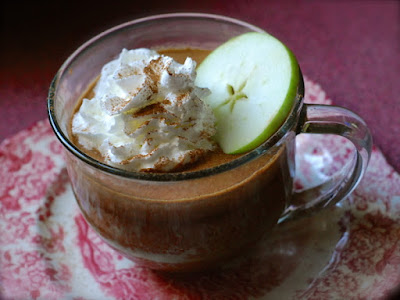I eat a lot differently now that I live alone. There are many reasons for the change but I'd have to say that the top two are that I have considerably less money to spend on food now, and that it takes one person a long time to make their way through a full recipe of anything. Both of those things have, of course, also affected how I shop for food.
These days, before anything goes in my grocery cart, I ask myself can I afford it, and can the leftovers be frozen, canned, or re-purposed into a new dish. Since I dislike eating the same dish over and over again for days in order to use it up, that second question is every bit as important as the first.
These days, before anything goes in my grocery cart, I ask myself can I afford it, and can the leftovers be frozen, canned, or re-purposed into a new dish. Since I dislike eating the same dish over and over again for days in order to use it up, that second question is every bit as important as the first.
One way I get more bang for my meat-shopping buck is to head for the grocery store early in the morning. Meat and poultry that are getting near to the "best by" date marked on their packaging are marked down by the department manager, usually by a factor of about thirty percent. Provided it's used, frozen, or canned on the day it's purchased, the contents of those discounted packages are perfectly safe to eat, and the price reduction can make a significant difference to my budget.
I found a package of discounted turkey drumsticks on an early morning foray to the store this weekend. I like turkey but a whole bird is really a lot of meat for me to get through and, unfortunately, turkey parts are usually a lot more pricey pound-for-pound than a whole, frozen bird. These drumsticks were a case in point: although not subject to the same kind of mark-up as turkey breast meat, they are regularly priced at about $3.25/lb compared with the $0.95/lb price of a seasonally priced whole turkey. The package of two drumsticks I was looking at was regularly priced at $6.77 and marked down by 30%. That's still not as inexpensive as a whole frozen turkey but, with the reduced price falling below $5.00 for the package, it fell within my budget. First criterion met.
Turkey's infinitely adaptable. I knew I'd have no problem finding a way to cook it so that it could be frozen and/or re-purposed so I bought it.
The drumsticks were huge (they made me think of peterodactyl legs, which made me grin) so I decided to cook them in my slow cooker, remove the meat from the bones, freeze some of it, and use some of it for my main meal the next day. The question then became what flavours to use with them. I decided to go for a taste of fall and pulled together the following ingredients:
- 1/2 cup onion, cut in a 1/2 inch dice
- 1 pint jar (approximately 2 cups) applesauce.*
- 2 large turkey drumsticks
- poultry seasoning
- salt
- pepper
I seasoned the drumsticks all over with salt, pepper, and poultry seasoning, then put them in the slow cooker, sprinkled the diced onion over them, and poured the applesauce evenly over the top. After putting the lid on the cooker, I left them to cook on the high heat setting for about 4-1/2 hours. When they were cooked through and falling-apart tender, I removed the drumsticks from the pot to a platter and let them cool to room temperature.
I removed the sauce from the slow cooker too, transferring it to a glass bowl and letting it cool to room temperature as well.
When everything was cooled, I put a lid on the bowl of sauce and put it in the fridge, then pulled the meat off of the drumsticks. (I found my fingers worked best for breaking up the turkey. I was able to more easily find all the cartilage pieces and remove them.) I divided the meat into a sufficient quantity for my meal the next night and two packages for the freezer. I stored it in the fridge overnight.
The following day I skimmed the fat layer from the top of the sauce bowl and discarded it. I then put the turkey I'd portioned for my supper that day into an oven proof dish and covered it generously with sauce. I reheated it in a 350F oven for about 20 minutes, until heated through and bubbly. It was delicious!
The following day I skimmed the fat layer from the top of the sauce bowl and discarded it. I then put the turkey I'd portioned for my supper that day into an oven proof dish and covered it generously with sauce. I reheated it in a 350F oven for about 20 minutes, until heated through and bubbly. It was delicious!
I can think of several ways to use my frozen portions of turkey and sauce: I could make an open faced sandwich, mix the meat and sauce with rice and veggies to make a casserole, or use the meat and sauce together with some cubed, roasted root vegetables as the filling in a meat pie.
All in all, the drumsticks and the ingredients I cooked them with turned out to be a good value. I'll get at least two more tasty meals from that package of turkey; a fine thing for both my meal planning and my budget. :)
*I make my applesauce with unpeeled apples and cook it down for a long time, until it's quite thick and dark. If your applesauce is thinner or you're using a commercial product, you may want to opt for apple butter instead.
































